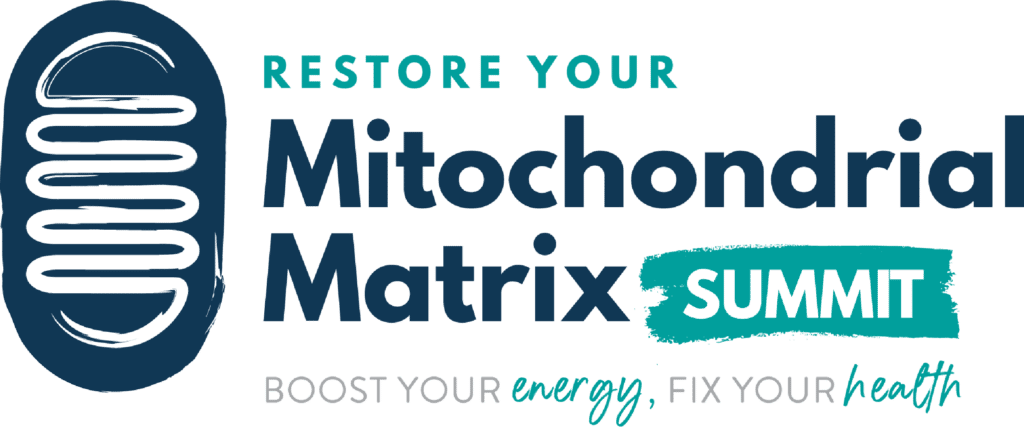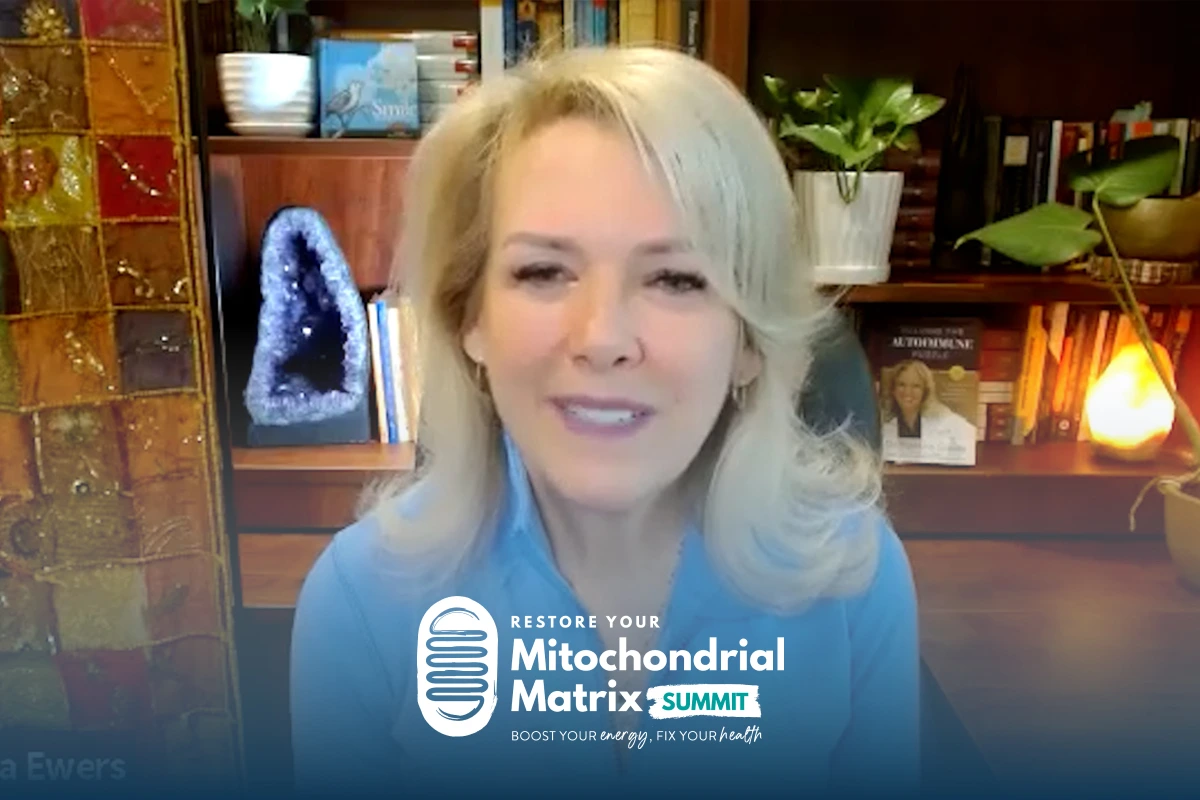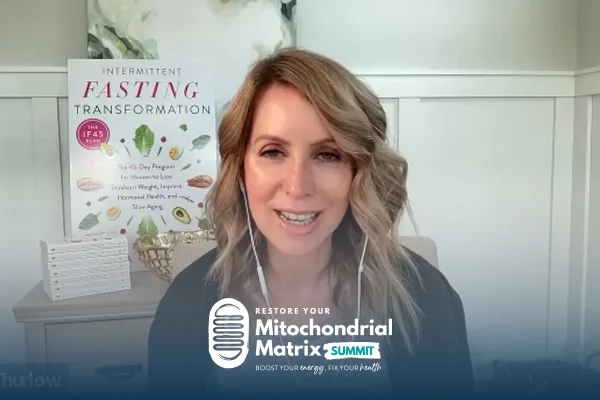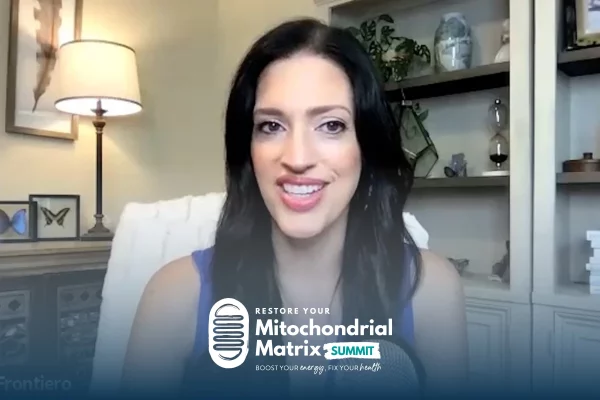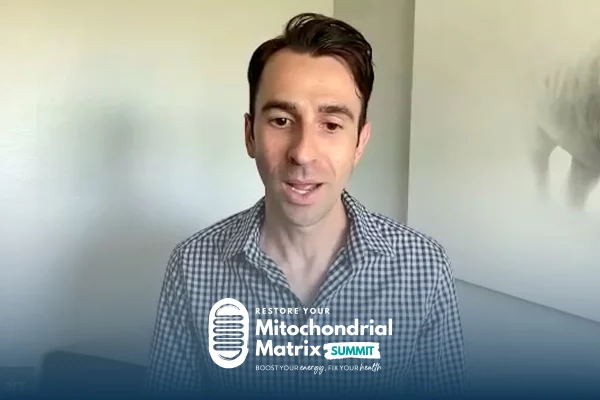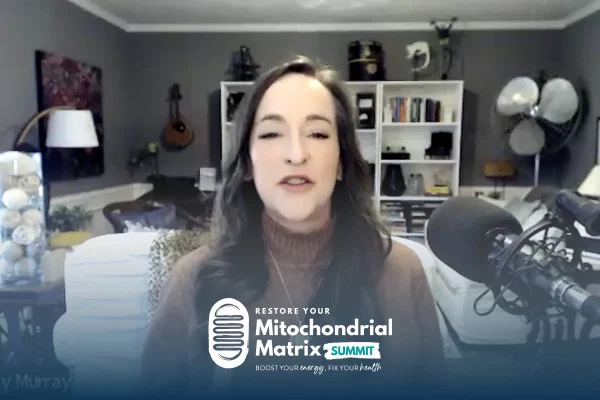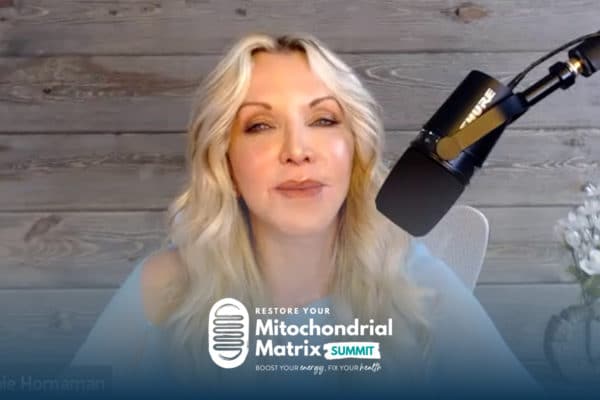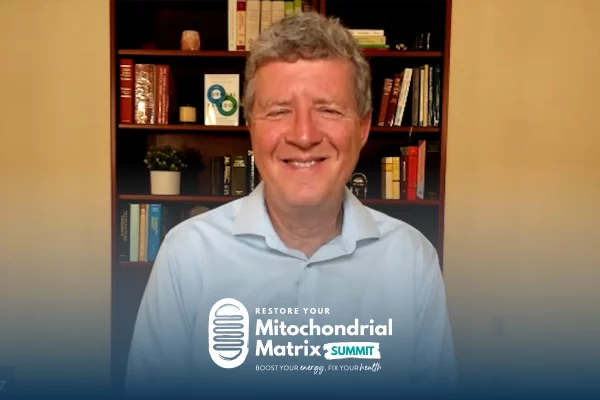Join the discussion below
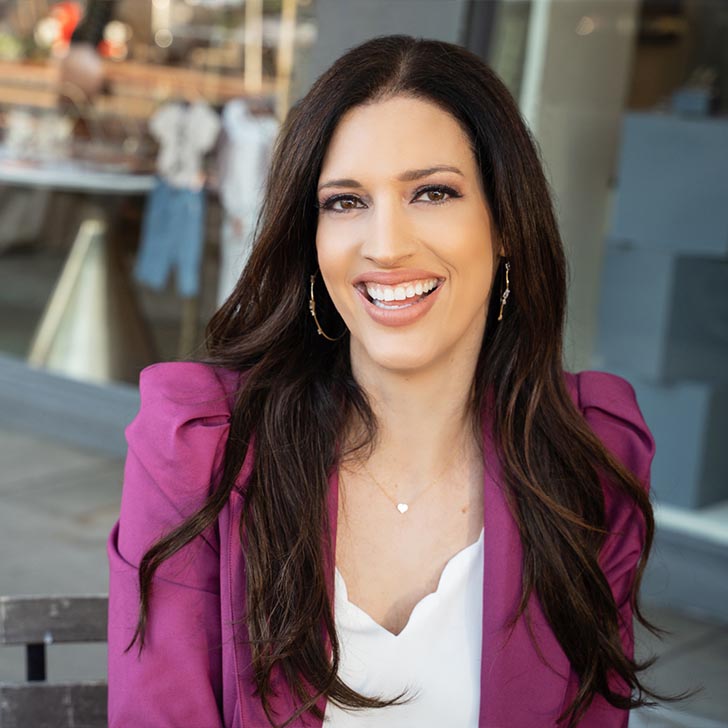
Laura Frontiero, FNP-BC, has served thousands of patients as a Nurse Practitioner over the last 22 years. Her work in the health industry marries both traditional and functional medicine. Laura’s wellness programs help her high-performing clients boost energy, renew mental focus, feel great in their bodies, and be productive again.... Read More
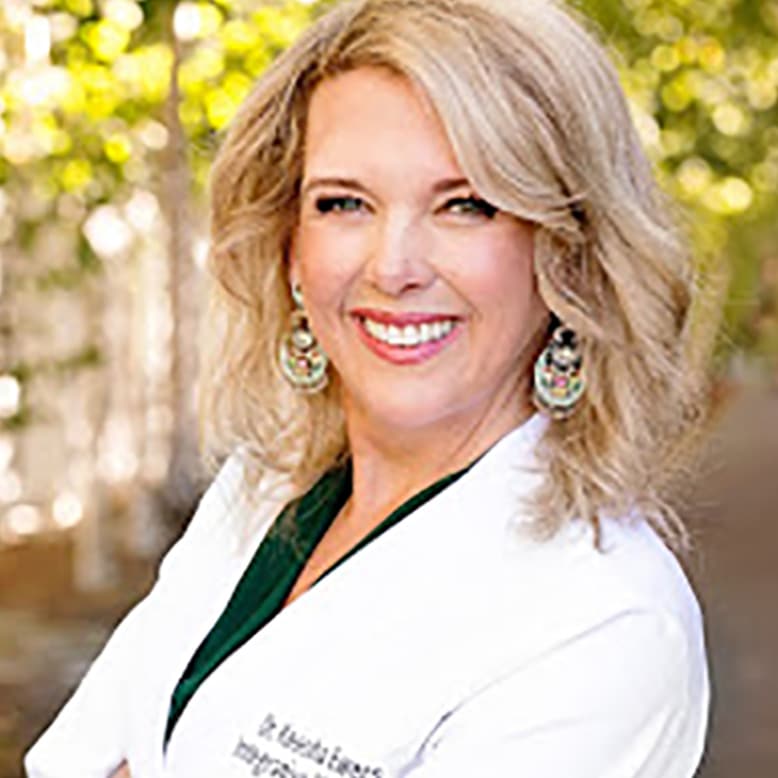
Keesha Ewers, PhD, ARNP-FNP-C, AAP, IFM-C
Dr. Keesha Ewers is an integrative medicine expert, Doctor of Sexology, Family Practice ARNP, Psychotherapist, herbalist, is board certified in functional medicine and Ayurvedic medicine, and is the founder and medical director of the Academy for Integrative Medicine Health Coach Certification Program. Dr. Keesha has been in the medical field... Read More
- Believe it or not, everyone has trauma, learn how it is connected with your current state of health
- Discover the first step we can take to heal childhood trauma and how to reverse the damage trauma causes to our brains
Related Topics
Autoimmune Disease, Ayurveda, Childhood Trauma, Energy, Genetics, Healing, Mitochondria, Research, Stress, Therapy, TraumaLaura Frontiero, FNP-BC
Hi, you’re watching another episode of the Restore Your Mitochondrial Matrix Summit. I’m your host, Laura Frontiero, and I’m bringing you experts with fresh ideas, proven methods, so you can boost your energy and fix your health and build the life you love. And today my special guest is Dr. Keesha Ewers. Hi, Keesha, welcome to the summit.
Keesha Ewers, PhD, ARNP-FNP-C, AAP, IFM-C
Thanks for having me, Laura.
Laura Frontiero, FNP-BC
Oh, so excited. Now I wanna introduce you to our audience here. You’re an integrative medicine expert, a doctor of sexology, I love that, a family practice nurse practitioner, a psychotherapist, an herbalist, and you’re board certified in functional medicine in Ayurvedic medicine, and you’re the founder and medical director of the Academy for Integrative Medicine Health Coach Certification Program. You’re also a TEDx speaker and a bestselling author of a couple of books, and you have some interesting specialties. You specialize in healing unresolved trauma, and how past childhood trauma impacts adult health. And today we’re gonna get into stress and trauma and how it affects your mitochondria, and this is something that not everyone is talking about. So welcome.
Keesha Ewers, PhD, ARNP-FNP-C, AAP, IFM-C
Thanks. Yeah, it’s a subject that’s near and dear to my heart. And we don’t realize that the hurts that we went through when we were younger are impacting us in our current day template and we can actually change it, which is so cool.
Laura Frontiero, FNP-BC
That is cool because I think people define themselves moving forward for the rest of their lives over this trauma, whether they know it or not, and sometimes not willing to release it ’cause it’s part of their identity. And I know it’s such an interesting thing because you think I wanna release that, I don’t want that to be impacting my life. But then when it comes down to it, it could be really hard to let it go. Yeah. Okay We’re gonna get into that and how you do that. And you say that everyone has trauma, so we’re gonna talk a little bit about that. But first off, how did you come to this work? What brought you here to this space?
Keesha Ewers, PhD, ARNP-FNP-C, AAP, IFM-C
Anyone that’s doing what they do in our space has a story of their own and I’m definitely no exception. So I started out as a, I call it a baby nurse at the age of 19. I gravitated toward the high adrenaline junky forms of medicine and worked in the intensive care unit for about 10 years, had four children, was a marathon runner, a sky diver. I was just like this adrenaline junky person and perfectionist. Drove myself so hard. And when I was in my early 30s, one morning, and this is what my patients always say too, like all of a sudden, I got sick, which is not accurate, but that’s how we experience it. One morning I woke up and I had 10 extra pounds of just like puffiness and redness and pain all over my joints. And it was like someone had taken the batteries out of the Energizer bunny and I was just flattened.
And so I got in to see a doctor and then her process of her history taking, she asked if I had a family history of autoimmune disease and I said, “Yeah, I think my grandfather had rheumatoid arthritis and was wheelchair-bound with it at the end of his life and died at the age I am right now, which is 57, and I never knew him.” And she said, “Well, that’s what you have and here are two prescriptions. One’s for methotrexate, and one’s for a non-steroidal anti-inflammatory drug. And come back when you get worse, not if, but when, and we’ll change your meds.” And this is the same thing that’s being done today over 25 years later. And I remember saying, “Hang on, hang on, hang on,” and she’s got the door knob in her hand and I’m like, “Wait, is there anything else I could do? I’m very disciplined, I make my own food, I’ll do whatever else.”
She said, “No, I’m afraid you have drawn the short straw in the genetic lottery, my dear,” and she left. It was just like . So I remember driving home thinking, my model of medicine clearly has this sort of dead end when it comes to auto immunity. And there might be another way of thinking about this. And I always tell people, I wouldn’t have known an herb if it had bitten me. Like I just was not in any other form of medicine. And so I went home and I got on my dial-up modem computer and started researching PubMed, where we keep our medical research and looking for whatever I could find on science behind autoimmunity and maybe a different way of thinking about things. And I ran across an article on yoga and autoimmunity and it was compelling and I was in my first yoga class the next day.
As yoga teachers want to do, I was holding an asana posture as he’s wandering through the studio, and he’s talking about this framework of medicine that’s the sister science of yoga called Ayurveda. And he said just enough about this 5,000-year-old system of medicine out of India, that it piqued my interest and I went home and got back on my computer and started researching it. And it was like revolutionary to me, the idea that we’re all different and we have different requirements for our food and water and exercise and sleep and it’s not a one-size-fits-all the way that I was trained, that you match the pill to the ill, it’s all evidence-based and everybody’s supposed to be standardized, but what Ayurveda said all those years ago is we’re not standardized people.
And so why do we have gold standards when we are not standardized? And it just all of a sudden broke open for me and I thought, gosh, that doesn’t even make any sense what we do. And then a lot of stories started going through my head of like giving a Napsin IV to one patient and having them go to sleep with it for anti-nausea and another one having them crawl the walls, and realizing, oh yeah, like different drugs interact with different people differently. Of course, because we’re different. It just started making a lot of sense to me why different people responded to our protocols differently in the ICU. And so I started really investigating my own, what they call the dosha type. And what I discovered is Ayurveda, again, 5,000 years ago said the autoimmune disease is undigested anger.
And this concept that you have to digest your emotions, digest your memories and your life experiences was also very alien to me. And I remember thinking, oh, that’s interesting. I was learning to meditate, I was becoming a yoga teacher throughout this process. When you first try to learn how to meditate, you have this, well, at least I did, this idea that you’re supposed to have your mind stand still, and you’re not gonna have any thoughts and so I’m like trying to not have thoughts. And this word autoimmune kept coming across my third eye space and I kept trying to SWAT it away and then I thought, okay, I’ll just look at it. And so I started looking at the word autoimmune and I thought, oh, that actually means I’m attacking myself. I don’t have anything else to blame this on. And so I thought, hmm, maybe I need to start looking interiorly for this instead of the answers outside of me. And then it came back like, oh, undigested, anger. And so I thought, if I’m attacking myself, then I’m kind of committing suicide in a societally acceptable manner.
So was there a time when I wanted to die? And so that was a really interesting question instead of, how do I get out of this as quickly as possible, ask the question differently. And so I started going back in this meditation and I landed on this little 10-year-old girl version of myself who was being sexually abused by the vice principal of the elementary school that I was attending. And I remember looking at her and going, oh, you wanted off the planet. My dad was in the Navy and he was out to sea at that time, I was raised with no television, we lived in Japan for a lot of my childhood. I don’t even think I knew the word abuse or molest or sex or any of these things.
I didn’t know how to tell my mom. I just told her I didn’t wanna go to school and I was afraid and I had stomach aches and headaches, and I cry a lot. I thought, okay, you were confused, didn’t know what was happening for a good reason. And I wonder if that time period is linked to this one where I’m now attacking myself. And science tells us that that’s true now. And for me, in that moment, that question, I wonder if these are connected and then realizing they have to be. This undigested anger, I’ve never felt angry about this, I’ve never dealt really. I’ve just become a perfectionist, an overachiever, a super everything that I put my hands on. I wonder if there’s something here that needs to be unlocked. And so I got myself into trauma therapy and by darn if that RA didn’t go away within six months.
Laura Frontiero, FNP-BC
That’s insane.
Keesha Ewers, PhD, ARNP-FNP-C, AAP, IFM-C
And it’s never been back.
Laura Frontiero, FNP-BC
That’s incredible. Here’s what’s happening right now. There’s people watching this right now who are identifying with your story. They’re saying, wow, I have something like that too and I’ve had chronic health problems and I’ve tried everything, and maybe this is gonna help unlock this for me. And there’s also people watching right now that say, I don’t have any trauma.
Keesha Ewers, PhD, ARNP-FNP-C, AAP, IFM-C
That’s exactly right. Those two things are happening right now.
Laura Frontiero, FNP-BC
So I would love for you to speak into that for the people who say, I don’t have any trauma. and we’re gonna connect this to mitochondria, everyone, I promise, but first we need to lay down this foundation. So go there for us.
Keesha Ewers, PhD, ARNP-FNP-C, AAP, IFM-C
Yeah, it’s an easy connection to make, let me tell you. The thing about trauma is, the way that I label it now is we have capital T trauma, and that’s the kind of trauma that everyone kind of thinks about, especially when they hear my story. Sexual abuse, domestic violence, having a parent addicted to a substance or mentally ill or incarcerated or dead or divorced, neglect, abandonment, psychological emotional abuse. All of these are considered capital T traumas. And not everybody has those, thank goodness, right? Sometimes people will hear my story and go, “Oh my gosh, thank goodness I didn’t have that happen to me” and I’m like, “Yes.” And I can say, and I know this makes people skin crawl, but I can say I wouldn’t trade any of this for anything. That it’s part of my journey. And that’s the part where you get to the healing, when you can say that. The thing about the other kind of trauma, the lowercase T trauma, there was a study I found when I did my doctoral work on healing unresolved trauma, and I was fascinated, blown away by it.
And so I’m looking at all these fMRI scans, on PET scans of people’s brains, this is your brain on trauma, this is your brain not on trauma. And your brain on trauma, when you have post-traumatic stress disorder, and a big capital T trauma, is the prefrontal cortex shrinks. And that’s your adult executive function part of your brain. It’s the one that we don’t even have online until we’re 26 years old. Children don’t have that part formed yet. And then we have a growth of volume in our amygdala, in our limbic system, the part that says, am I safe? Am I okay? Is everyone gonna respect me, love me, keep me in the tribe? Because we know we’re biologically wired that if you’re put on the outside of the firelight circle from your tribe, that the saber tooth tiger can eat you.
So lowercase T trauma is actually, it affects the brain the same way as PTSD. It’s any experience of rejection, betrayal, the things that lead us to, I’m not good enough, I’m not beautiful enough, I’m not smart enough, I’m not fast enough, I’m not rich enough, I’m not skinny enough, blah, blah, blah, blah. So those are lower case T traumas and guess what? Science tells us that people that mark a perceived stress scale index, remember you’ve all seen those, the ones that say like your perceptions of your stress. Have you moved? Have you gotten married? Have you gotten divorced? Have you gotten a raise? have you lost your job? Have you had a child? Have you empty nested? Like all of the big, kind of the things that happen as a normal life cycle.
We have a point system we put with those in science. And for people that indicated that they felt overwhelmed all the time, which I don’t have a patient that comes into my practice that doesn’t feel overwhelmed and even sometimes breaks down and cries when I ask them to do very simple self-care activities, because they don’t have any time. That is doing the same thing to your hormone system, your mitochondria, your gut microbiome, your gut terrain, where the microbiome lives, and your brain architecture. If you report yourself as chronically stressed and overwhelmed, you have the exact same shrinkage in your prefrontal cortex and growth in the right side of your amygdala. It’s crazy. We have a culture that actually rewards us to be productivity and achievement-oriented and puts us in that fire. The thing that I came away with from this study was, oh my gosh, we have the saying, death by a thousand cuts.
I don’t know where that comes from, but it’s the same idea, you have the same impact on your system, on the mitochondria of your cell, when you have all of these little T traumas and we all have them. And I give lots of examples that those kinds of things where people I’ve done therapy with, I sometimes will talk about a woman that came to see me who was the third of three girls in her family. And when she came to see me, she had Hashimotos thyroiditis. Any autoimmunity, you’ve got mitochondrial dysfunction, you’ve got leaky gut, you’ve got some kind of toxic burden, and you have trauma. And so the thing that came forth for her was, as I was investigating what I call the four corner pieces of the puzzle, everyone’s an individual, we’re all different, Ayurveda taught us that a long time ago, but we do have our own unique genetics that need to be looked at. I look at 100% of my patient’s genetics. We all have our own gut health, we all have our own toxic load, and we all have our history of trauma and how we manage our stress, and so I look in all four corners when I’m first starting with somebody.
And as I’m looking at the trauma corner with her, I’m starting to discover that she doesn’t think she has trauma, but when I’m starting to look at certain behaviors that are showing up, I started asking her relevant questions around that, and she started sharing with me like, “Oh yeah, I was the youngest of three girls and I never got anything new for birthdays and Christmas.” And I said, “So what’s your belief about that then?” “Oh, well, I’m not as important as my sisters.” So she had this incredible credit card debt, she was up to her eyeballs with debt. And her behavior strategy that she had used as an adaptive strategy for that very painful belief that she had, that she wasn’t as important to her parents as her sisters, was that she’d buy herself something new every time she was stressed. She deserved it, right? I deserved this. There are these shadow aspects that we don’t see about ourselves like, this was a major trauma for her, but you would never report that on any kind of scale or index as a trauma to be the third of three children who never got anything new.
Laura Frontiero, FNP-BC
So here’s what’s happening in my brain right now, I’m literally categorizing all the traumas of my life.
Keesha Ewers, PhD, ARNP-FNP-C, AAP, IFM-C
You have hundreds of them.
Laura Frontiero, FNP-BC
I’m thinking of the capital T traumas that have happened, and I’m thinking of the lower case T traumas that happened, and now I’m thinking, how is it possible that I don’t have an autoimmune disorder? Honestly, I’m thinking of all of it, all the way down to the really mean girl who bullied me. I mean, everything, every possible trauma. Divorce when I was tiny, all the things. You’ve established that these traumas are a central part to gut dysfunction, mitochondria dysfunction, immune system dysfunction, brain dysfunction, so there is a deep connection there. And I’m so glad you’re here because we have so many experts talking about other aspects, and this piece, and I don’t know what it is, and maybe you can shed some light on this, people wanna discount this piece. They want it to be, tell me what to eat, give me some binders to pull out toxins, give me something to help regrow my gut microbiome, but don’t ask me and don’t tell me that stress is the problem or trauma is the problem. I mean, this is the problem, right? So there’s that. So speaking to that a little bit, how do you get around this stigma of, I’ll do everything except that.
Keesha Ewers, PhD, ARNP-FNP-C, AAP, IFM-C
Yeah. In my book, “Solving the Autoimmune Puzzle,” I have this little thing that I call the misery to motivation ratio. And unfortunately, what I have discovered, and I’m no exception, like I had to be halted as if the road runner had dropped an anvil on my head and I was wily coyote or the other way around, wily coyote dropped an anvil on my head and I just went splat and kind of went up and went, are you trying to get my attention? My body had been trying to get my attention for years. I popped Advil running marathons, had planner fascitis. I ran over my pain like it was nobody’s business, no pain, no gain. I could have been a Nike poster child. The thing about this is, until our forward motion is impaired, we tend to not look up and say, oh, is there something I need to be looking at here?
It’s like Joseph Campbell’s Hero’s Journey. Like you’re given the challenge, but if you don’t choose to accept it, then it just gets worse and worse and worse. So you can’t force this on people, but the World Health Organization has even come out and said, 96% of all chronic illnesses are stress-induced. The World Health Organization says that we probably ought to be… But the word stress, like I teach for the Institute for Functional Medicine, so I get up on stage and I’m talking to doctors who have never thought about getting at root cause who are now like drinking this down because they’re so sick of being in the paradigm of writing prescriptions for medications that have a whole host of side effects that they have to write another prescription for.
When they wind up in the Institute for Functional Medicine, learning about how to get to root cause, they’re so like, “Tell me, I want to know this.” And I’m up on stage saying, “You have to stop telling your patients to cut down on their stress.” Because the truth of the matter is, the person that has a special needs child or is caregiving an aging parent, or is in a job that they love, or is in a relationship that’s needing a lot of work right now, they’re gonna throw those things away. So reducing your stress is implying that you have to just cut those things out. Instead, teach them how to change their relationship to these things. Like this is all about perception. Perception drives health and disease. Your perceptions are the first thing that trigger whatever neurotransmitters you’re going to release in your brain that then go and tell the adrenals what to do. Like uh-oh, we got a line on our tail again, go, go, go, go.
And at that moment, cortisol is released from the system, which is supposed to happen, right? If you have a line on your tail and your life is actually genuinely threatened, this is the wonderful design that is you. Your body responds with a cortisol release that then triggers the heart to increase heart rate and blood pressure so that you can flee your fight. And that cortisol that gets released also helps your immune system kind of like halt, we’re not doing anything right now. It takes your reproductive hormones and it pours them into the production of cortisol so that that zebra that’s being chased right now knows that it might not survive. So it certainly is not gonna stop and have sex and reproduce right now. So anything that has to do with those yummy reproductive hormones, those get hijacked into cortisol production, and then your digestion just goes zip because it’s also not okay to stop and have a bowel movement in the middle of the Savannah if you’ve got a lion on your tail. And so your digestion changes, the way you take in information narrows, so that you’re not thinking about like how beautiful the bird sound and the way that the grass feels underneath your hooves and the breeze and the blue sky and the cloud formations.
You’re looking at like the horizon and you’re looking for survival. So everything about the way your brain takes in information and filters it, remembers it, and stores it changes. So all of this also includes shutting down your cell wall so you don’t get nutrients in and you don’t put garbage out because everything’s on hold. And if you do that in perpetuity, because you keep perceiving yourself as somehow threatened, by your calendar, by your bank account, by your own vision of yourself in the mirror that you know, oh man, I’m getting older, mm. Oh, my belly, ah. Like all these things that we do constantly all day long, judging other people, not feeling safe about the world and the way it is right now. Like all of these things will keep that perceptual field in a space that says, I’m not okay, or the world’s not okay, and me in the context of my environment is not okay. Then you are releasing hormones inside your body that are affecting your microbiome that’s breaking down your gut wall cortisol over time, that’s left with the faucet on like that, the cell walls, it starts to… Right? And so now you’re becoming really sensitive to your foods, to the chemicals, to molds, to lime, to all of the things that you actually should be able to live in harmony with and have no problem.
Laura Frontiero, FNP-BC
Yeah, your immune system should be able to handle it. Now, you said something really important, you said, to practitioners, stop telling your people to lower their stress because they’re not gonna be able to remove a lot of those things from their life. So in the time we have left here, what I would love for you to do is to give people tools. How do you change the relationship, knowing the stress isn’t going away, how do you change the relationship with stress so that you stop committing suicide inside your body? So you stop destroying your body and setting yourself up for autoimmune conditions and cancer and chronic disease and all of it. What would you say? What can you help us with in these moments?
Keesha Ewers, PhD, ARNP-FNP-C, AAP, IFM-C
I always like to start people off, and in my book, “Solving the Autoimmune Puzzle,” I have some worksheets around this in there, it’s a little bit of a workbook. And one of the things that I’ll ask people to do is just do this little experiment where for 24 hours, just 24 hours, really observe your dialogue. The internal dialogue and the external dialogue. Like how do you speak to yourself and others silently? How do you speak to yourself and others out loud? And notice the content, the tone, the cadence, the frequency, the intention, all of it. And what you’ll notice is, and there’s a really beautiful practice you can do where you gather some whites pebbles and some dark pebbles.
And at the end of the day, sit down and take a minute and notice like, how often did I have a life supportive thought? Put a white pebble in the middle. How often did I have one that was not life supportive? Put the dark pebble in the middle. And what you’ll notice is that there are a lot of dark pebbles in the beginning until you start. Oftentimes people believe that their personality or the way that they perceive themselves and everyone else is something that they just have to passively observe. Well, that’s just how I am, that’s my personality. But that’s not accurate. That’s like watching a kid race through the grocery store, sweeping all the candies into the aisle and you just kind of observe them and go, well, that’s just how they are. Nobody would be in the grocery store and say that, they would be like, “Where is that kid’s parent,” right?
Laura Frontiero, FNP-BC
Yeah.
Keesha Ewers, PhD, ARNP-FNP-C, AAP, IFM-C
Yeah. Well, you have to be the parent of your own self. The first boundary that’s important for you to set is with yourself. Not with all the toxic people in your world, but actually with yourself and your own mind. And so what you do is you start noticing like, what are the automatic thoughts that you have? 94% of all thoughts are recycled. I don’t know who counts this stuff, but that’s what science tells us. 94% are ones you’ve already had, they’re on loop, and you ruminate about them, and they’re patterns of your perceptions. They’re not true and they’re not untrue, they’re just the way you think. Just ’cause you have a thought doesn’t make it true. So what you do is you take that and you see like, how often do I have a compassionate, loving thought? Who’s it directed toward, what it’s content, and really notice it.
Can you develop curious compassion for yourself that brings you into collaborative relationship with all of your systems? Autoimmunity is combative. That means that you’re at war with yourself. And one of my favorite sayings is like, when you’re at war with yourself, there’s no winner. There’s no winner, right? And so what you wanna do is you wanna have everybody collaborating in there. And so just start observing and notice your willingness or lack there of to self-confront. Like, oh, that’s not a thought that’s really in service of anything, and so can you shift the channel? can you take a thought, an experience that you’ve had from somewhere else, like watching a hummingbird with a flower, or a beautiful sunrise, or a sunset, or holding a baby and smelling their smell, or watching their first giggle, or the first snowfall, or any of the magical things in your life.
You’ve had them, we have an encyclopedia of them, and they are also in there. And so you can actually take responsibility and say to that little mind that’s running through the grocery store aisles swiping everything off the shelves, no, no, no, no, no, this is not how we act, no. We’re gonna clean this up, we’re gonna put everything back, and this is what I want you, this is how to behave. And so you become a more of an active participant with your own mind and you set good boundaries with it and you say, here’s something you can chew on. Oh yeah, that amazing memory of being out on a sailboat and having the wind in your hair. Like taking in that information of the cloud formations and the breeze that lifted the hair off your neck and the warmth and the dolphins you got to see alongside the boat and the magic in this universe that you have experienced. You can actually change the channel with whatever it is that’s not life supportive and affirming.
Laura Frontiero, FNP-BC
This is so good.
Keesha Ewers, PhD, ARNP-FNP-C, AAP, IFM-C
You learn how to do this.
Laura Frontiero, FNP-BC
This is so good. And once you do this first step of being kind of self responsible, working on yourself first, your relationship with these thoughts, then I’m sure you have a step-by-step process to go through until you get to the healing space. And when you get to that point, your overall internal health starts to improve so-
Keesha Ewers, PhD, ARNP-FNP-C, AAP, IFM-C
Yeah, the thing that we do is, if you get stuck in any of the places, I have a program called Healing Trauma Through the Chakra System. And I use the chakra system as sort of a map, you’re not healing because you’re balancing your chakras. The first one is safety. Like your root chakra symbolizes safety. So if you don’t feel safe, nothing else sticks. I don’t care how many binders you take. you’re still gonna have mass cell activation, you’re still gonna have a leaky gut, you’re still gonna be pouring cortisol into your system, your mitochondria are gonna get on lockdown, they’re not gonna get fed, they’re not gonna get rid of their garbage because the cell wall will go zip. And so you’ll become insulin-resistant. Like everything that has to do with getting into the cell doesn’t happen anymore. So if you don’t feel safe, that’s number one. And so when people say to me like, “I just don’t feel safe, I can’t do this,” that’s information for you. And then that means we could do some trauma therapy and we go deeper. So the exercise I gave you, that’s actually an information gathering for you to say, can I change that channel or is there like a lever in it and it’s stuck and I’m just here? And so then there’s something that’s happening there that we actually can heal. And so that’s when I always say, “Now it’s time to work with someone then,” and that’s where I work with people.
Laura Frontiero, FNP-BC
Thank you so much for connecting all the dots between how this trauma and stress, the big T trauma, the little T trauma, and how this all affects our health. You’ve done an extraordinary job of bringing this all together. I can think of clients that I have tried so hard to get them to healing space, and I know that the thing left is unresolved trauma. And when we talk about that, you’ve seen so many practitioners, you’ve done every amazing protocol out there, we know what’s happening in your genetics, we know what’s happening in your gut, we know what’s happening, we’ve run organic acids, we can see what’s happening in deficiencies, in mitochondria, and they can’t get where they wanna be. It’s this trauma thing.
Keesha Ewers, PhD, ARNP-FNP-C, AAP, IFM-C
And they’re pouring thousands of dollars down a rat hole because they’re taking all the right stuff and it’s going out this hole in the bottom of the boat. And this is where, I wasn’t in private practice for more than three months, Laura, and I said, “I’ve gotta become a therapist.” Like you can’t separate the mind and the body. And then later on, I started really, like I’m certified in plant medicine through MAPS. Plant medicine really stops that ruminating cycle in the left of the brain for a little period of time so that you can actually get underneath it. ‘Cause sometimes that’s the only thing that I’ve seen work for people. And then a lot of people will be like, “Okay, I’m gonna go find psychedelic therapy,” but whoever’s doing that isn’t a good guide or a good therapist or understands adrenals and hormones and microbiome, and so all they’re doing is collecting insights, but not integrating. So to me like the first important word is willingness and the second one is integration. And that’s the thing that steps you into a different pattern. These are just nervous system reactivity patterns, and a lot of people are focusing on like, “Well, let’s stimulate that vagus nerve,” but what’s underneath that got it going in the first place, that’s what we have to get at, and so that’s the work that I do.
Laura Frontiero, FNP-BC
And you have extraordinary success with your patients. So tell us where we can find you. ‘Cause I know people listening right now are gonna wanna learn more from you.
Keesha Ewers, PhD, ARNP-FNP-C, AAP, IFM-C
drkeesha.com. D-R-K-E-E-S-H-A.com.
Laura Frontiero, FNP-BC
As from what I understand, you have a wealth of free information that people can get. You have your books, and then you have programs available if people wanna work deeper with you.
Keesha Ewers, PhD, ARNP-FNP-C, AAP, IFM-C
Yes. Yes.
Laura Frontiero, FNP-BC
So incredible. Thank you so much for sharing your journey, your knowledge, you are just a bright light in this space where sometimes we just can’t figure out how to help people, and this is the missing piece. And for the practitioners listening, really, really, I encourage you to bring this into your practice. Study from Dr. Keesha, she has so many resources available for practitioners and consumers alike. So thank you so much.
Keesha Ewers, PhD, ARNP-FNP-C, AAP, IFM-C
Thank you. Bye, everybody.
Laura Frontiero, FNP-BC
Do take care, bye.
Downloads
